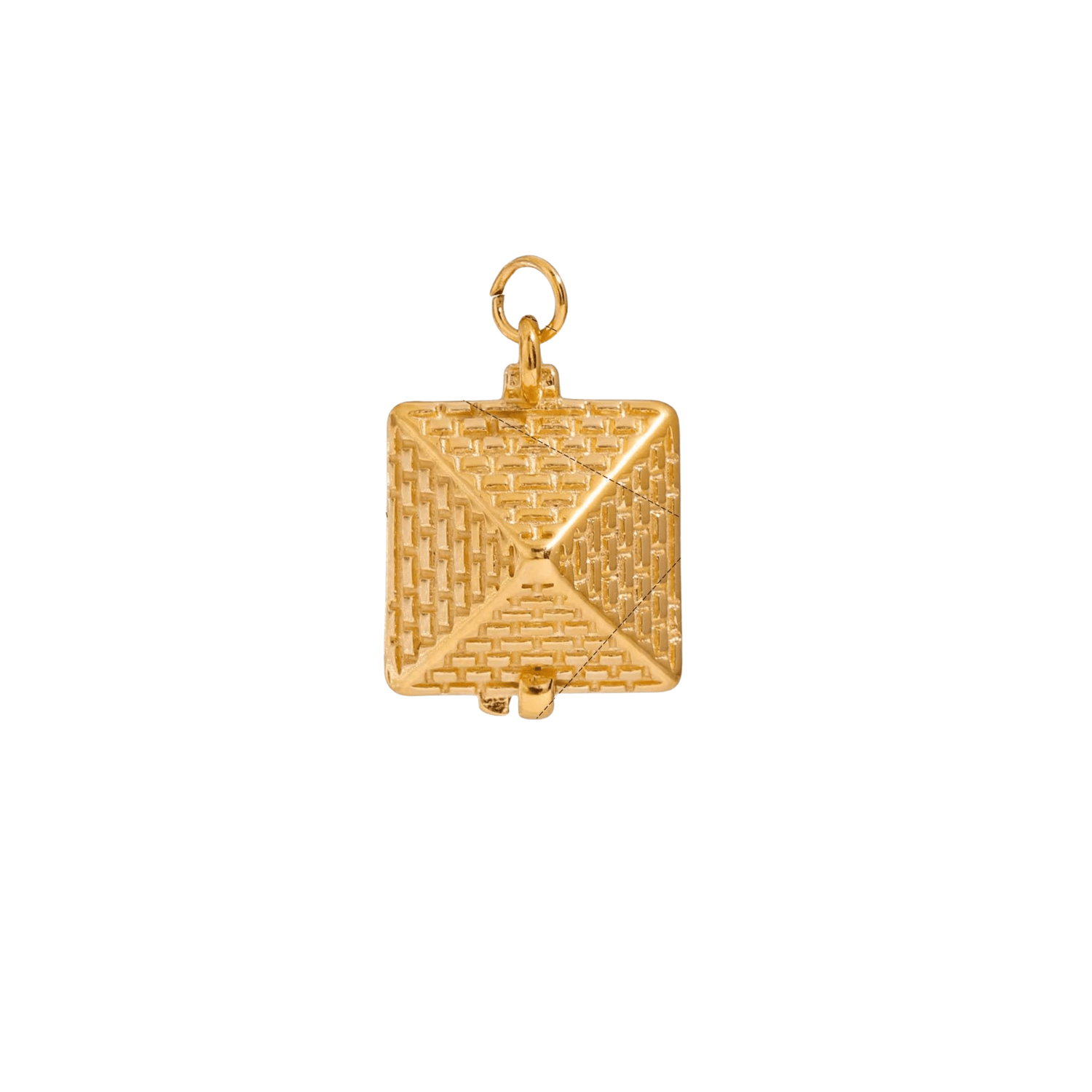
The Evolution of Jewelry Packaging: From Practicality to Luxury
Share
In a bustling Mumbai jewelry store, a customer lifts the lid of a velvet-lined box, revealing a gleaming gold necklace nestled within. The box itself embossed with intricate motifs, secured by a magnetic clasp, and embedded with a discreet QR code linking to the jewel's provenance feels as luxurious as the treasure it holds. This is no mere container; it's a statement, a story, a symbol of status. In India, where jewelry is woven into the fabric of tradition and celebration, packaging has evolved from humble protector to a powerful player in the luxury retail experience.
Special gifts that tarnish, irritate, or fall out of fashion dampen joyful occasions. That disappointment clouds memories meant to endure. Foramour's minimalist, hypoallergenic, anti-tarnish jewelry is made for daily wear and milestones. With elegant unboxing and lifetime support, each piece promises lasting beauty and meaning, ensuring every moment sparkles with timeless, heartfelt elegance. Shop Now!
The Evolution of Jewelry Packaging in India: From Practical Utility to Symbols of Luxury
Jewelry packaging in India has undergone a quiet revolution. Once designed solely to safeguard delicate pieces during transport, boxes and cases now serve as extensions of a brand's identity, blending aesthetics, sustainability, and technology. According to a 2024 report by Future Market Insights, the global jewelry boxes market is projected to grow from USD 164.3 million in 2025 to USD 234 million by 2035, with a steady CAGR of 3.6%. In India, where jewelry is not just adornment but a cultural cornerstone gifted during weddings, Diwali, and Akshaya Tritiya this transformation is especially pronounced. Packaging is no longer an afterthought; it's a strategic tool that shapes consumer perceptions and drives brand loyalty.
The Indian jewelry market, deeply rooted in tradition, is also fiercely competitive. Retailers, from heritage brands to direct-to-consumer startups, are rethinking how packaging can elevate their offerings. It's not just about protecting a diamond ring or a pair of jhumkas; it's about creating an experience that resonates with India's discerning buyers, who see jewelry as an investment, an heirloom, and a status symbol.
A Shift to Premium and Sustainable Designs
Walk into a Tanishq showroom in Delhi or a Reliance Jewels outlet in Bengaluru, and you'll notice the shift. Gone are the days of flimsy cardboard boxes or plastic pouches. Today's jewelry packaging is a feast for the senses: plush velvet exteriors, magnetic closures that snap shut with satisfying precision, and embossed logos that gleam under store lights. These premium designs aren't just about aesthetics; they're engineered for practicality. Online jewelers, catering to India's booming e-commerce market, prioritize shatter-proof rigid setups that double as display cases yet remain letterbox-friendly for deliveries in urban hubs like Gurugram and Mumbai.
Sustainability is another driving force. A 2024 Journal of Cleaner Production review, cited in the Future Market Insights report, found that recycled-paper rigid boxes reduce cradle-to-gate CO₂ emissions by 28% compared to virgin-board equivalents. Indian brands are taking note. Tanishq, for instance, has rolled out eco-conscious packaging for its festive collections, using biodegradable materials and seed-based papers that can be planted after use. Independent jewelers in Kolkata and Hyderabad are also embracing hand-crafted wooden and fabric-based cases, blending traditional craftsmanship with modern sustainability goals. As per FICCI's 2024 retail reports, this eco-friendly pivot aligns with India's broader push toward sustainable consumption, particularly among younger buyers in urban centers.
Technology Meets Tradition
In a country where trust is paramount in jewelry purchases, packaging is becoming a high-tech ally. NFC-tagged lids, now standard in some mid-tier offerings, allow buyers to authenticate high-value pieces and access provenance data with a tap of their smartphone. QR codes printed inside box lids link to digital certificates of authenticity or brand stories, fostering transparency in a market wary of counterfeits. This digital integration is particularly resonant in India, where the jewelry retail sector is embracing the country's digital-first retail boom.
Customization is another trend gaining traction. Short-run digital printing, costing less than USD 0.40 per unit, enables brands to offer monograms, bridal dates, or even NFT-linked artwork inside box lids, as noted in the Future Market Insights report. In cities like Chennai and Ahmedabad, where personalization is a key gifting trend, these bespoke touches transform packaging into a memorable part of the purchase. Festive-themed boxes, adorned with motifs inspired by Diwali rangolis or wedding mandaps, further enhance the emotional connection between buyer and brand.
Challenges in the Luxury Pivot
Yet, this shift toward luxury packaging isn't without hurdles. For mid-tier retailers in cities like Pune and Noida, the cost of premium packaging adding 5–12% to product prices can strain margins in a price-sensitive market. Supply chain bottlenecks also pose challenges, as many luxury finishes, like velvet or metallic foils, rely on imported raw materials. The sustainability paradox adds another layer of complexity: while eco-friendly materials are in demand, achieving a luxurious look without compromising on environmental goals remains a delicate balance.
Then there's consumer skepticism. Some Indian buyers, particularly in smaller cities, view elaborate packaging as an unnecessary expense that inflates product costs. “Why pay for the box when I'm buying the jewelry?” one Hyderabad shopper remarked in a recent Indian Institute of Packaging (IIP) survey. For brands, the challenge lies in proving that packaging adds value not just in aesthetics but in functionality, trust, and brand recall.
Opportunities for Brand Differentiation
Despite these challenges, the opportunities are immense. In India's crowded jewelry market, packaging is a powerful differentiator. A well-designed box can linger in a customer's memory long after the purchase, reinforcing brand loyalty. Reliance Jewels, for example, has leaned into branded luxury boxes to enhance its gifting appeal, particularly during the wedding season. Modular inserts, highlighted by design-trend trackers at Richpkg, allow boxes to double as vanity organizers, encouraging reuse and keeping the brand front-of-mind.
Secure packaging also builds trust, especially in e-commerce. Tamper-proof seals and peel-away security tapes, now standard in mid-tier offerings, reassure online buyers in cities like Mumbai and Gurugram that their purchases are safe. Festive marketing offers another avenue for growth. Packaging innovations tied to Diwali, weddings, or Akshaya Tritiya India's peak jewelry-buying seasons create new revenue streams by turning boxes into collectible keepsakes.
A Memorable The Future of Jewelry Packaging in India
As India's jewelry market evolves, packaging is emerging as a silent but powerful partner to the jewels themselves. Industry experts predict that by 2030, packaging will be as critical as product design in shaping consumer choices, particularly in urban centers where digital-savvy buyers demand both luxury and transparency. Smart packaging think NFC-enabled certificates or anti-counterfeit seals is poised to grow alongside India's digital retail boom, as noted in the Mordor Intelligence report, which forecasts the global luxury packaging market to reach USD 22.36 billion by 2030 at a 4.27% CAGR.
For Indian brands, the path forward lies in balancing luxury aesthetics with cultural symbolism and eco-conscious materials. A box that evokes the grandeur of a Rajasthani palace, the vibrancy of a Diwali celebration, or the sustainability ethos of a new generation can do more than hold a jewel it can tell a story. In a market where every detail matters, jewelry packaging is no longer just a container; it's a canvas for connection, trust, and timeless value.
Frequently Asked Questions
How has jewelry packaging evolved in India from traditional to luxury designs?
Jewelry packaging in India has transformed from simple protective containers to sophisticated luxury experiences that reflect brand identity. Modern jewelry boxes now feature premium materials like plush velvet exteriors, magnetic closures, and embossed logos, while incorporating technology such as NFC tags and QR codes for authentication. This evolution aligns with India's competitive jewelry market, where packaging serves as a strategic tool for brand differentiation and customer experience enhancement.
What sustainable packaging options are Indian jewelry brands adopting?
Indian jewelry brands are increasingly embracing eco-friendly packaging solutions, with recycled-paper rigid boxes reducing CO₂ emissions by 28% compared to virgin-board alternatives. Leading brands like Tanishq have introduced biodegradable materials and seed-based papers that can be planted after use, while independent jewelers are using hand-crafted wooden and fabric-based cases. This shift toward sustainable packaging aligns with India's broader push toward environmentally conscious consumption, particularly among younger urban buyers.
How is technology being integrated into modern jewelry packaging for authenticity and customer engagement?
Modern jewelry packaging incorporates advanced technology features like NFC-tagged lids that allow smartphone authentication of high-value pieces and QR codes linking to digital certificates of authenticity. Short-run digital printing enables customization with monograms, bridal dates, or personalized artwork for less than USD 0.40 per unit. These technological integrations address India's need for transparency in jewelry purchases while enhancing customer engagement through features like provenance tracking and brand storytelling.
Disclaimer: The above helpful resources content contains personal opinions and experiences. The information provided is for general knowledge and does not constitute professional advice.
You may also be interested in: Community-Centric Craft Stories Strengthen Jewellery Brands
Special gifts that tarnish, irritate, or fall out of fashion dampen joyful occasions. That disappointment clouds memories meant to endure. Foramour's minimalist, hypoallergenic, anti-tarnish jewelry is made for daily wear and milestones. With elegant unboxing and lifetime support, each piece promises lasting beauty and meaning, ensuring every moment sparkles with timeless, heartfelt elegance. Shop Now!
Powered by flareAI.co

